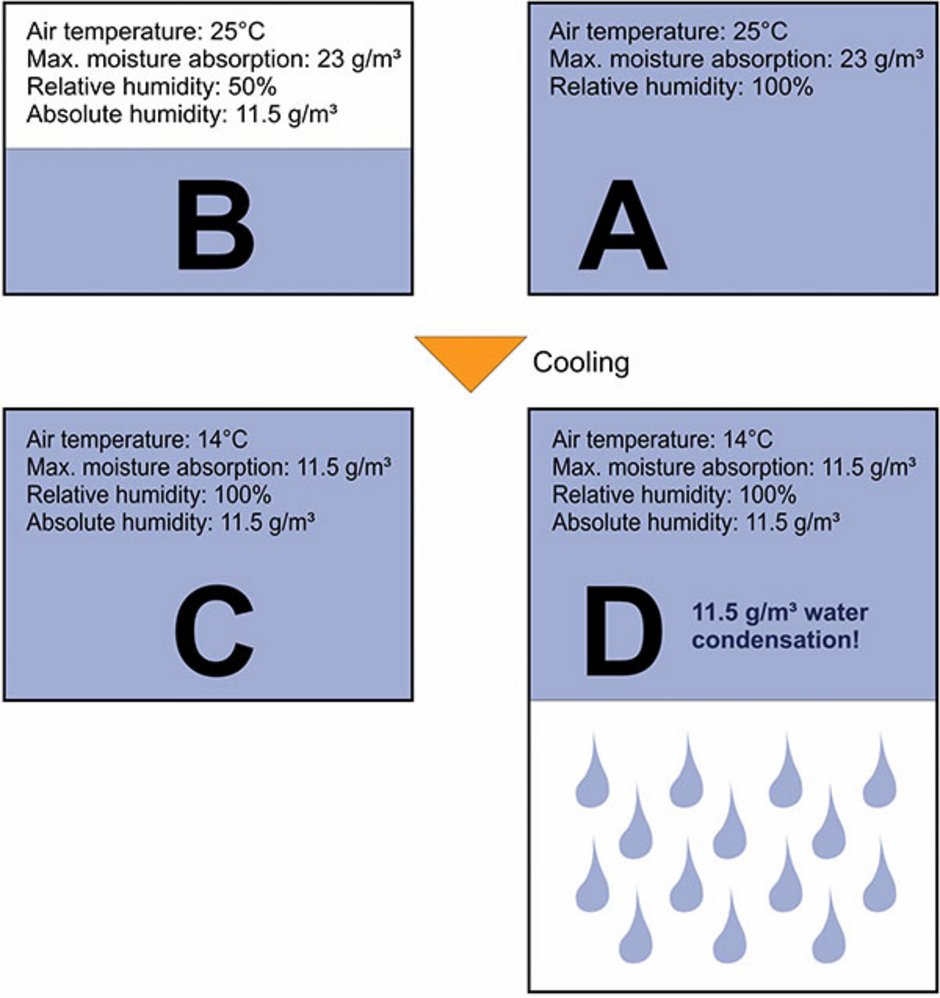14 - What is relative and absolute humidity?

When we read about drying plastics, certain terms come up again and again: relative and absolute humidity, dew point, and vapour pressure deficit. We need a clear definition of these concepts if we are to understand them in context.
Water vapour is always present in atmospheric air. And the hotter the air, the more water it can hold. At first this might seem like a contradiction, but it’s actually easy to observe. Think of humid summer days or cold winter weather. The raindrops that fall in tropical storms are larger and contain more water. In winter, people with glasses often find that their lenses fog up when they come indoors.
Relative humidity is a unit of measurement for the moisture content of air. It describes the volume of water vapour per m3 of air as a percentage of its maximum moisture-holding capacity at a given temperature and pressure. Or to put it simply, relative humidity indicates the actual water content of air as a percentage of the maximum amount it could possibly hold.
The term absolute humidity is less common: it describes the actual amount of water vapour in the air in g/m3. This also depends on the temperature of the air.
Air at 25°C, for example, with a relative humidity of 100 per cent, would have an absolute humidity of 23g/m3 (A). From there, it follows that if the relative humidity of air at 25°C were to drop to 50 per cent, absolute humidity would be 11.5g/m3 – or half as much (B). If the air were cooled to 14°C, its maximum moisture-holding capacity would decrease. The absolute humidity of 11.5g/m3 would then equate to 100 per cent relative humidity, and the air would be saturated (C). 100 per cent relative humidity in cold air represents a significantly lower absolute humidity than, for example, 25 per cent relative humidity in warm air.
If the air at 14°C is cooled even further, its moisture-holding capacity will decrease – resulting in supersaturated air (D). This can be observed in water vapour condensing – or when it starts to rain.
You need suitable equipment for your drying process? For further information you can visit www.motan.com
